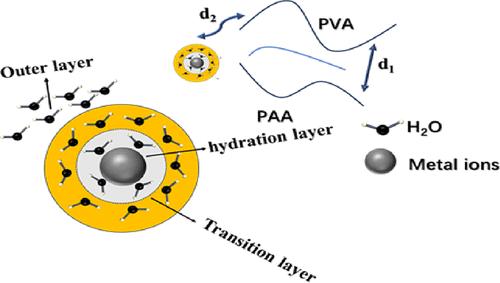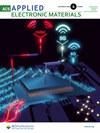Green Durable Biomechanical Sensor Based on a Cation-Enhanced Hydrogel
IF 4.3
3区 材料科学
Q1 ENGINEERING, ELECTRICAL & ELECTRONIC
引用次数: 0
Abstract
The multinetwork hydrogel-based biomechanical sensor has attracted considerable attention due to its excellent mechanical properties. However, in most cases, due to the weak binding force of the hydrogel matrix to water and the uneven structure of the sensing layer, it is difficult to prepare pressure (strain) sensors that can quantify stimuli-response and be durable for long periods. Moreover, the preparation of hydrogels often involves the intervention and residue of toxic substances, making them unsuitable for monitoring biomechanical indicators. In this paper, we prepared a flexible, conductive biohydrogel capable of long-term storage using low-cost, biocompatible materials. The hydrogel is composed of lignosulfonate sodium and poly(vinyl alcohol), blended with acrylic acid and enhanced with various cations with different hydration abilities. The pressure sensor based on the as-prepared hydrogel exhibits a high sensitivity of 1.145 kPa–1 to medium pressure encountered by the human body (i.e., 0.1 to 10 kPa). Due to the high flexibility and toughness of the hydrogel, the corresponding pressure sensor demonstrates 2500 cycles of cycling stability. Also, the strain sensor based on the as-prepared hydrogel shows a wide testing range from 0 to 1100% and quantifies the strain–response physical process based on its mechanical and electrical properties, making it suitable for use. Due to the compressibility, high sensitivity, and long-term stability, the proposed sensors could show great potential in wearable electronic devices for monitoring biological activities.

基于阳离子增强水凝胶的绿色耐用生物力学传感器
基于多网络水凝胶的生物力学传感器因其优异的机械性能而备受关注。然而,在大多数情况下,由于水凝胶基质与水的结合力较弱,而且传感层的结构不均匀,因此很难制备出能够量化刺激响应并长期耐用的压力(应变)传感器。此外,水凝胶的制备往往涉及有毒物质的介入和残留,因此不适合用于监测生物力学指标。在本文中,我们利用低成本、生物兼容的材料制备了一种可长期储存的柔性导电生物水凝胶。这种水凝胶由木质素磺酸钠和聚(乙烯醇)组成,与丙烯酸混合,并用具有不同水合能力的各种阳离子增强。基于制备的水凝胶的压力传感器对人体遇到的中等压力(即 0.1 至 10 kPa)具有 1.145 kPa-1 的高灵敏度。由于水凝胶具有高柔韧性和韧性,因此相应的压力传感器具有 2500 次循环的稳定性。此外,以制备的水凝胶为基础的应变传感器具有 0 至 1100% 的宽测试范围,并可根据其机械和电气特性量化应变响应物理过程,因此非常适合使用。由于该传感器具有可压缩性、高灵敏度和长期稳定性,它在用于监测生物活动的可穿戴电子设备中将大有可为。
本文章由计算机程序翻译,如有差异,请以英文原文为准。
求助全文
约1分钟内获得全文
求助全文

 求助内容:
求助内容: 应助结果提醒方式:
应助结果提醒方式:


